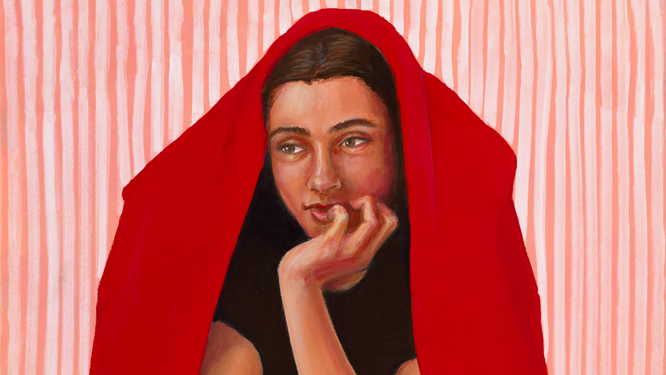
Red Through the Ages: From Fairy Tales to Home Styling
I love red. Few colours carry as much weight, passion, and contradiction as red. Throughout history, red has been a colour of life and death, danger and protection, passion and punishment. It has clothed royalty, marked revolution, dazzled in theatre and art, and decorated the homes of the rich and famous. Across cultures, red has symbolised everything from vitality and fertility to sin and temptation. It is a colour that refuses to be ignored. It is bold, emotional, and eye-catching.
Below: Little Red protective cover for iPhone
Red in History
The use of red dates back thousands of years to ancient cave paintings, when red ochre was used to depict animals, people and even burial rites. Ancient Egyptians associated red with both chaos and vitality, as it was the colour of the desert (symbolising danger) and also the life-giving blood of humans and gods.
In Rome, red became the colour of power and authority. Generals wore red cloaks, soldiers carried red flags, and emperors were draped in crimson to signify their dominance. Later, in the Middle Ages, red held dual meanings: the scarlet robes of cardinals symbolised the fire of the Holy Spirit, while depictions of the devil in manuscripts and art often painted him red, marking the colour as both divine and dangerous.
By the 19th and 20th centuries, red was the colour of revolution and change: emblazoned on the flags of France, Russia, and China as a symbol of solidarity, resistance, and the blood of the people.
Beyond politics and religion, red has been used in homes to convey wealth, warmth, and personality over the centuries.
In the Renaissance and Baroque periods, deep crimson and scarlet fabrics lined the walls of palaces and mansions. Red damask and velvet signalled luxury, while Persian rugs often wove in rich reds to anchor a room with drama and status. In Victorian England, red wallpapers and draperies created cosy yet imposing drawing rooms, embodying the era’s love of opulence.
In the 20th century, red shifted into more democratic design. From the cheerful red kitchens of the 1950s to the bold pop-art reds of the 1960s and 70s, it became a symbol of energy, modernity, and fun. Designers and artists embraced red for its vibrancy and ability to command attention.
Below: Defensive line canvas print
Red in Storytelling
Literature, folklore, and theatre have long used red as a shorthand for themes of danger, desire, and transformation. Some of the most enduring characters in Western storytelling are defined by their iconic red garments. These include:
Little Red Riding Hood
The little girl’s red cloak is a splash of colour that stands out in the forest; it is a potent symbol. Depending on the interpretation, her cloak can be read as protection, temptation, or even a warning. More deeply, it may convey innocence on the cusp of danger and a sexuality waiting to awaken. It is both a shield and a target, making her an unforgettable figure in the cultural imagination.
Dorothy's Ruby Slippers
In The Wizard of Oz, Dorothy’s red shoes are a shimmering and magical representation of hope, transformation, and the idea that the power to change one’s destiny lies within. Their sparkling red hue makes them unforgettable and symbolises resilience in the face of danger.
Below: Offside painting by Leah Mariani
The Fairy Tale of The Red Shoes
In contrast to The Wizard of Oz, the red shoes in Hans Christian Andersen’s The Red Shoes have a much darker meaning. Here, the red shoes symbolise vanity, desire, and ultimately punishment. The young girl’s obsession with her beautiful red shoes leads her to ruin, unable to stop dancing until she dies. This cautionary tale highlights red’s dangerous allure.
Annie’s Red Dress
In a more modern context, Annie’s iconic red dress in the musical Annie conveys optimism and resilience, much like Dorothy's ruby slippers in The Wizard of Oz. Against the backdrop of the Great Depression, Annie's bright dress stands as a beacon of hope and determination. Unlike Andersen’s tale, this red symbolises courage and the promise of a brighter tomorrow.
Taken together, these examples show how red operates as one of the most versatile colours in human culture. It is the colour of both sin and salvation, danger and desire, revolution and resilience. It carries stories of power, transformation, and emotion that continue to resonate across time and culture.
In our homes, red continues to be a favourite accent. Whether appearing in an artwork or boldly on a feature wall, it brings warmth, confidence, and a sense of drama to a space. A pop of red can energise a minimalist room or add depth to an eclectic one.
Red is more than just decoration. It has meaning. It is the heartbeat of human life and storytelling.








